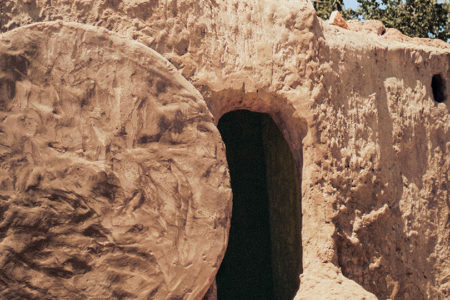Dancing with the Devil
The reality of demonic attack and Jesus’ victory over it is woven throughout the Gospels, and there are 82 references to the word demon or demons in the New King James Bible. The sinister fact of fallen angels could not be any clearer.
However, Americans seem to exhibit an unusual dichotomy on the subject: They tend to reject organized religious belief while at the same time exhibiting an attraction to occult ideas and the belief in demons.
In 2012 two separate surveys addressed this phenomenon. The Pew Research Center found that an increasing number of Americans show an aversion to traditional religious affiliation and almost 20 percent of the population has no religious identification at all. These constitute the so-called nones, as in “none of the above.” Yet a whopping 85 percent also expressed belief in the existence of demons.
In a separate survey, the research firm Public Policy Polling determined that 63 percent of Americans aged 18 to 29 believe in demons and their ability to influence and possess humans.
This trend may be traced to cultural influences. Demonic themes have been flooding television shows and films. On Halloween a reality TV program supposedly featured a live exorcism. The television series Supernatural attracts a wide audience, along with the Starz channel’s dark occult-comedy, Ash vs Evil Dead. Demon possession is the focus of Cinemax’s new series Outcast, coming this year, as well as the recently released film Yakuza Apocalypse: The Great War of the Underworld.
A growing preoccupation with the occult is leading to an explosion of paganism. I recently ran across a website listing the best demons for occult practitioners to summon up. The culture is so laden with tolerance for bedevilment that last summer the Satanic Temple in Detroit proudly boasted about unveiling its statue of the goat-headed pagan god Baphomet and invited the public to attend.
None of this should surprise us. The dichotomy plaguing America is a convergence of two trends: one that rejects theological truth and one that recognizes, even embraces, demonic activity.
By the Sea of Galilee archaeologists have unearthed a 1,600-year-old marble slab with an Aramaic inscription on it. Experts believe the relic corroborates the location of ancient Kursi, the area of the Gergesenes (or Gadarenes) where Jesus cast a legion of demons out of a man and into a herd of swine (Mt. 8:28–34; Mk. 5:1–20; Lk. 8:27–38).
A similar situation was evident in Kursi. When Jesus encountered the man in the Gadarenes who was possessed by such a multitude of demons that he had the strength to burst his chains, Jesus exercised clear authority over the supernatural realm. Recognizing Him as “Jesus, Son of the Most High God” (Mk. 5:7), the demons capitulated, begging Jesus to send them out of the man and into a herd of pigs. Jesus granted the request.
The locals knew the man was demon-possessed, and all their attempts to restrain him had failed. But after Jesus healed the man, “they began to plead with Him [Jesus] to depart from their region” (v. 17). They knew about demonic power; yet they rejected the Savior, the only One who could conquer it.
To conclude that the physical world of sight, sound, touch, and smell is all that exists leads to what the great writer C. S. Lewis called the fallacy of naturalism. But to embrace the existence of the supernatural without recognizing that Christ is Lord of all, both the physical and spiritual realms, is equally disastrous.
For we do not wrestle against flesh and blood, but against principalities, against powers, against the rulers of the darkness of this age, against spiritual hosts of wickedness in the heavenly places. Therefore take up the whole armor of God, that you may be able to withstand in the evil day, and having done all, to stand (Eph. 6:12–13).
Followers of Christ Jesus must refute false positions, proclaiming truth to the marketplace, while wearing the whole armor of God.








